|
By Gretchen Schuldt COVID cut an uneven path across state courts in five mid-size counties last year. Douglas County's criminal case backlog actually shrank by 17% from December 2019 to December 2020, while Shawano County's, highest among the five counties to begin with, grew by 46%, tops among the five. The number of pending criminal cases in Shawano County in December 2020 was more than three times the number in any of the other four – Douglas, Pierce, Marinette, and Oconto counties. WJI examined the numbers of pending cases in the state's five largest counties here and the five smallest counties here. This post, using Wisconsin Court System statistics from December 2019 and 2020, looks at pending cases in mid-sized smallest counties, as measured by population. Douglas County population: 44,295 Biggest change: The number of pending misdemeanor cases dropped by 74, or 37%. Of note: Pending cases fell in every category from 2019 to 2020, for a total decline of 95, or 17%. Median age of pending cases: 2019 – 108 days; 2020 – 104 days, down 4%. Pierce County population: 42,212 Biggest change: The median age of pending criminal cases shot up by 41 days, or 26%. Of note: Pending felony cases were up by 19, making up almost half of the total increase of 39. Median age of pending cases: 2019 – 156 days; 2020 – 197 days, up 26%. Marinette County population: 41,872 Biggest change: The number of pending felony cases rose by 80, or 48%. Of note: The number of pending criminal traffic cases fell by 20, while the number of other misdemeanors rose by 22. Median age of pending cases: 2019 – 86 days; 2020 – 153 days, up 66%. Shawano County population: 40,881 Biggest change: The number of pending felony cases rose by 263 cases, or 51%. Of note: Shawano County's pending case numbers were far greater in both years than those in any other of the five mid-sized counties. In 2019, Shawano had 958 total pending criminal cases in December. Douglas County was next, with 556 pending cases. Those two counties were numbers one and two, respectively, again in 2020. Shawano County had 1,402 pending cases; Douglas County had 461. Median age of pending cases: 2019 – 177 days; 2020 – 230 days, up 30%. Oconto County population: 38,965
Biggest change: The number of pending felony cases rose by 71, or 46%. Of note: The number of pending criminal traffic cases dropped by 13, while other pending misdemeanors rose by 23. Median age of pending cases: 2019 – 107 days; 2020 – 141 days, up 32%.
0 Comments
By Gretchen Schuldt Milwaukee County Chief Judge Mary Triggiano has said it will take up to two years to clear the case backlog in the criminal division of the county's circuit court system. Outagamie County District Attorney Melinda Tempelis told officials there that the county's backlog has risen from 1,700 in 2019 to more than 3,000 this year. In counties all over the state, COVID has slowed courts to a crawl. There were 58,678 pending criminal cases in circuit court in December 2019, according to state statistics. By December 2020, that number had risen 28%, to 75,153, an increase of 16,475. State population: 5,822,434 Biggest change: The number of felony cases went up by 35%, or 9991 cases, from December 2019 to December 2020. according to state statistics. Median age of pending cases: 2019 – 130 days; 2020 – 170 days, up 31%. The increases have hit counties large and small and in between. WJI ecamined the differences in 15 counties – the five largest by population, the five smallest, and five smack in the middle. We'll look at the five largest cases today, and the rest next week. Large Counties Milwaukee County population: 939,489 Biggest change: The number of felony cases shot up by 33%, or 1,267 cases, from from December 2019 to December 2020. Of note: Pending criminal traffic cases fell by 437, or 43%, likely the result of less traffic and the reluctance of officers, due to COVID concerns, to come in direct contact with drivers. As measured as a percentage, Milwaukee County had the second smallest increase in pending cases among the five counties – 18%. Median age of pending cases: 2019 – 124 days; 2020 – 269 days, up 117%. Dane County population: 561,504 Biggest changes: As measured by numbers, pending felonies increased by 1,598, the most in any category. As measured in percent, pending misdemeanors rose 83%, also tops. Of note: Dane County saw big increases in all three categories. Pending felonies were up 73%, misdemeanors, as stated above, were up 83%, and criminal traffic cases were up 61%. Its overall increase in pending criminal cases was 76%. Median age of pending cases: 2019 – 126 days; 2020 – 211 days, up 67%. Waukesha County population: 406,978 Biggest changes: As measured by numbers, pending misdemeanors increased by 826, the most in any category. As measured as a percent, pending felonies rose 68%, also tops. Of note: Waukesha County also saw big increases in all three categories. The smallest increase was in pending criminal traffic cases, which were up 365, or 56%. Pending misdemeanor cases rose by 826, or 63%. It's overall increase in all three types of cases was 64%. Median age of pending cases: 2019 – 127 days; 2020 – 170 days, up 34%. Brown County population: 268,470 Biggest changes: Pending felony cases were up by 639, or 39%. Of note: Pending criminal traffic cases were up by just 53 cases, or 10%. Median age of pending cases: 2019 – 138 days; 2020 – 182 days, up 32%. Racine County population: 197,727
Biggest changes: Pending felony cases were up by 345, or 27%. Of note: Like Milwaukee County, Racine County saw a decline in pending criminal traffic cases. They were down by 115, or 16%. Racine County saw a 9% increase in pending cases of all types, the smallest increase among the five counties. Median age of pending cases: 2019 – 155 days; 2020 – 169 days, up 9%.  Chisholm Chisholm By Gretchen Schuldt Criminal cannabis convictions dropped significantly in Milwaukee County and the state over a 10-year period, but racial gaps remain, according to a new report by the Milwaukee County District Attorney's Office. And the statewide decline largely was driven by what happened in Milwaukee County, according to the report. While the number of cannabis arrests dropped dramatically in Milwaukee County from 2010 through 2019, the state's arrest numbers remained steady, peaking in 2018 at 17,428. Statewide, "arrests for possession of marijuana have not decreased below 14,000" per year during the decade, the report said. Overall, the number of marijuana possession arrests in Milwaukee County dropped 60%, from 4,785 to 1,927 from 2010 to 2019, according to the data. That is a decline of 2,858 arrests. "Arrests now represent ~ (about) 13% of overall state arrests (down from ~33%), with ~16% of Wisconsin's population," the report said. The number of convictions in the county declined 94% over the same time period, the report said. There were 1,285 convictions in 2010 and just 96 in 2019, a decline of 1,189. The drop in Milwaukee County convictions drove a statewide decline over the decade, the report said. Convictions for marijuana possession dropped statewide from 5,108 in 2010 to 4,021 in 2019, a decline of 1,087, or 21%. "Notably, 2018 conviction trends without Milwaukee saw 10-year highs," the report said. "And felony convictions only decreased ~3% instead of a ~43% decrease." Still, racial disparities persist. Black people in 2019 were 3.2 times more likely than Whites to be arrested in Milwaukee County for marijuana possession only, without other crimes attached, according to the report. The gaps were far larger in some other counties, the report said. "The worst disparities in Wisconsin are in Ozaukee County (34.9 more likely) and Manitowoc (29.9 more likely)," the report said. Statewide, according to an earlier ACLU study, Black people were 4.2 times as likely to be arrested for pot possession than Whites. The new study, by District Attorney John Chisholm and researcher Brendan DuPont, is based on state circuit court records and FBI arrest data. The study is part of the office's efforts with the National Institute of Corrections Evidence-Based Decision Making Initiative to improve decision-making. "We focused on diverting or declining cases, like possession of marijuana, away from the justice system when appropriate," the report said. In 2015, Chisholm's office implemented a policy to not prosecute non-violent individuals who possess 28 grams (just under an ounce) or less of marijuana, the report said. Chisholm said in an interview that his office is unlikely to charge marijuana possession cases unless there is another issue, such as impaired driving, possession of a firearm while impaired, or an associated crime of violence. Chisholm favors cannabis legalization and regulation. The policy does not mean that possession cases are not prosecuted at all or that the arrests just disappear. "I suspect a lot of them are sent to municipal court," Chisholm said. Municipalities in the state have the option of prosecuting marijuana possession cases in municipal courts, where offenses are punishable by forfeitures are considered civil, not criminal matters. Counties other than Milwaukee County account for much of the racial disparities in convictions, according to the report. "In 2019, Milwaukee County had 69% of the state's Black population, but only 8% of its marijuana possession convictions," the report said. "Ninety-two percent of Black marijuana possession convictions occur outside Milwaukee County, despite the rest of Wisconsin representing only 31% of the Black population." Statewide, Black people had 14 convictions per 10,000, while the White conviction rate was 3.27 per 10,000. Black people were 4.3 times more likely than White people to be convicted, according to the report. In Milwaukee County, both races were less likely to be convicted than elsewhere, but the disparity was larger. The Milwaukee County conviction rate in 2019 was .11 per 10,000 residents for White people and 1.7 per 10,000 for Black people, about 15.5 times higher than for Whites. In 2010 Black people statewide were 9.5 times more likely to be convicted in marijuana possession cases. Black people then had 39.23 convictions per 10,000, compared to White people with 4.1 convictions per 10,000. The study did not fully examine other racial groups due to a lack of reliable data. It did say, though, that convictions in marijuana possession-only cases for American Indians or Alaskan Natives hit a 10-year high in 2019. By Gretchen Schuldt African Americans were defendants in more than three-fourths of the marijuana possession cases opened in Municipal Court last year, despite accounting for just 39% of the city's population. Blacks were defendants in 462, or 77% of the 603 cases filed. Whites were defendants in 63 cases, or 10% of cases filed; Hispanics were defendants in 62 cases, also 10%; and Asians in 11 cases (2%), according to court statistics. Just one Native American was a defendant, and four defendants were of unknown races. "Frankly, these numbers are outrageous," WJI President Craig Johnson said. WJI actively advocates for cannabis legalization. The figures "illustrate once again the disparate impact of cannabis prohibition laws on communities of color," he said. "Just as is the case with state criminal prosecutions, the numbers regarding Milwaukee Municipal Court citations show that African Americans are cited far more often than whites - and studies have consistently shown that both groups use marijuana at the same rates." "My position is that possession of marijuana cases must meet the standard of clear, satisfactory and convincing evidence to obtain a conviction. If 0.3 percent THC could be from the legal possession of hemp, then the ordinance violation should not be referred to court for prosecution." - Vince Bobot, candidate for Milwaukee city attorney More defendants had home addresses in the predominantly African American zip codes of 53206 and 53209 – 65 and 64, respectively – than in any other Milwaukee zip code. (See map) The city is 45% white, 39% African American, 19% Hispanic, 4% Asian, and 1 percent American Indian / Alaska Native, according to the U.S. Census Bureau. Tickets for marijuana possession "shouldn't be dismissed as insignificant," Johnson said. "They can lead to warrants if unpaid, and can have a heavy financial burden on those who receive them, especially young people. They can also have an adverse impact on employment, rental applications and other areas of life. Wisconsin must join other Midwestern states in legalizing marijuana so that this source of disparity in our justice system can be eradicated." Milwaukee home zip codes of defendants in 2019 Municipal Court possession of marijuana cases.
 By Gretchen Schuldt The City of Milwaukee, just five months into the year, already is in borrowing mode to pay off court settlements related to police conduct, a financing strategy that increases costs for taxpayers and leaves them with nothing to show for their money. The city will borrow $2 million to pay the family of a man who died in the back of a squad car, and will borrow another $2.3 million to pay the family of a man who died in jail of an epileptic seizure about 18 hours after telling police he did not have his regular dose of anti-seizure medicine, according to city documents and Budget and Management Director Dennis Yaccarino. Interest alone could add a million dollars or more to the total price tag over the life of the bonds, depending on their longevity and interest rates. Ideally, state and local governments use bonds to pay for large capital projects that are expected to last a long time, like roads, bridges, and schools. Borrowing for these types of projects allows governments to spread the costs over decades to ensure that future beneficiaries of the projects share in the costs. Borrowing for police-related settlements, however, is on the increase not only in Milwaukee, but across the country. Here, Yaccarino said, "It is a challenge to continue to budget core city services with no growth in revenues and have no ability to set up a funding mechanism for court settlements that eliminates borrowing without impacting those core services." The city traditionally has relied on a $5 million contingent fund to pay settlements that exceeded the amount budgeted for them, he said. This year, though, Yaccarino said, snow and ice removal costs are running $4.3 million over budget, melting away much of the contingent fund. The city's uncomfortable position is not unique to 2019. Budget figures show it is now common for the city to pay out more in damages and claims than the total $5 million budgeted in the contingent fund. Last year, the city borrowed $6.2 million to cover damages and claims like the police-related lawsuits it needs to borrow for now, according to city bonding documents. By Gretchen Schuldt The number of criminal bail jumping charges resolved in the state jumped 134 percent from 2000 to 2016 and the number of those charges dismissed soared 170 percent, according to a new Wisconsin Law Review paper. In 2000, bail jumping accounted for 7 percent of criminal charges adjudicated in the state; in 2016, that figure was 17 percent. The data suggest that bail jumping charges are used to induce defendants "to plead to their original charge rather than to punish them for violating their bond conditions," Amy Johnson wrote in "The Use of Wisconsin's Bail Jumping Statute: A Legal and Quantitative Analysis." Johnson's conclusion, buttressed by her quantitative findings, is something that defense lawyers also have argued based on their courtroom experiences. Felony bail jumping occurs when a person out on bond on a felony charge violates the conditions of that bond. Misdemeanor bail jumping occurs when a person out on bond on a misdemeanor charge violates the conditions of that bond. A bail jumping offense may not by itself be a crime. Missing a court date, violating a local ordinance, or having a drink could all be bail jumping offenses if bond conditions prohibit those things. Misdemeanor bail jumping carries a maximum penalty of nine months in jail and a $10,000 fine; felony bail jumping carries a maximum penalty of six years in prison and a 10,000 fine. The charges and penalties mean that a person charged with, for example, a felony that carries a two-year maximum sentence could face an additional six years in prison if they violate their bond in any way. There were 11,567 bail jumping misdemeanor and felony charges adjudicated in 2000 and 27,042 in 2016, an increase of 15,475. Of those resolved charges, 7,385, or 64%, were dismissed in 2000; by 2016, dismissals increased to 19,946, or 74% of bail jumping cases resolved. The 74 percent figure "is particularly informative considering that for all other fully adjudicated charges in 2016 the percentage dismissed was a significantly lower 47.32% (61,852 of 130,713 charges)," Johnson wrote. Johnson's paper, published as a comment, called for state courts to embrace reforms that "prevents extreme numbers of bail jumping charges. Doing so would reduce the leverage effect that prosecutors have without eliminating it entirely." The courts’ past and current interpretations of the bail jumping statute has “led to an increase in bail jumping charges, absurd consequences, and potential sentences to the charged crimes,” she wrote. “The result is that defendants are at a marked disadvantage when negotiating plea deals.” The Wisconsin Supreme Court, for example, has held that a defendant can be charged with multiple counts of bail jumping for violating a single bond. Johnson, as an example cited the example of a J.E., a composite of clients in actual cases she worked on during a 2016 legal internship. J.E., she said, is an alcoholic homeless man who got into a disturbance with another man on Madison’s State Street. Both men were charged with disorderly conduct; both admitted to being under the influence of alcohol. J.E. was granted a signature bond, but as conditions of that bond, was ordered to maintain absolute sobriety and to stay away from State Street. A few weeks later police arrested an intoxicated J.E. on State Street. He was charged with two counts of misdemeanor bail jumping. J.E.’s potential imprisonment suddenly jumped from a maximum of three months to a maximum of 21 months, Johnson wrote. “Ultimately, J.E. agreed to a plea deal that would dismiss the bail jumping charges if he pled guilty to the disorderly conduct….,” Johnson wrote. “Even if he was acquitted of the disorderly conduct, he would still have been subject to the bail jumping charges, and the likelihood of conviction resulting from those charges was too great for him not to take the plea.” Johnson graduated this spring from the University of Wisconsin Law School. Before she enrolled, she was an IT project manager and analyst for more than 20 years. During that time, she managed large software projects and gained considerable experience analyzing data. She said she got interested in the bail jumping topic when she read a State Supreme Court bail jumping decision, State v. Anderson. The court held that it was fine and dandy to issue multiple criminal charges for multiple violations of a single bond. In her paper, Johnson said that then-Justice Janine Geske, in a dissent, "points out a variety of scenarios where a detailed set of bond conditions that are violated could result in punishments that far exceed the initial crime." She continued: "This seems particularly outrageous when many conceivable conditions, like not drinking or not being in a certain area of town, are not criminal acts in and of themselves. A defendant with one criminal felony count could end up with punishment for violating bail conditions that far exceed the punishment for the crime itself." Geske’s dissent, Johnson said in an email, “rang very true based my anecdotal observations while working with clients that had bail jumping charges. I was curious about whether she was right or not.” Johnson’s planned paper “turned into a research project that took hundreds of hours," she said. Johnson analyzed Wisconsin Consolidated Court Automation Programs (CCAP) data for the years 2000 through 2016. The data included more than 1.6 million cases and 3.2 million charges. Statewide, disorderly conduct was the most frequently resolved offense in 2000, while misdemeanor bail jumping – charged when the underlying crime is a misdemeanor – was the fifth most common charge. Felony bail jumping was the tenth most commonly adjudicated crime. "Combined, bail jumping was third overall but the number of bail jumping charges was less than half of the number of disorderly conduct charges," she wrote. That changed dramatically by 2016. "Disorderly conduct was first," she wrote. "Misdemeanor and felony bail jumping were second and third, respectively. However, combined, bail jumping was the number one charge in Wisconsin, ahead of disorderly conduct by over 5,000 charges." The number of cases with multiple bail jumping counts loaded on to them also have increased, Johnson wrote.
In 2000, 23 percent of bail jumping cases closed had more than bail jumping charge; in 2016, the percentage was 35 percent. "Were Justice Geske’s assertions in her dissent in Anderson correct?" Johnson wrote. "Has the bail jumping statute and its interpretations resulted in a large number of bail jumping charges and an excessive exposure to penalties? The CCAP data suggests that she was indeed correct."  O'Hear O'Hear By Gretchen Schuldt Wisconsin's adult incarceration rate has passed the national average, according to a new federal report. The state locks up a larger share of its population than does any of its neighboring states of Michigan, Illinois, Minnesota, or Iowa, according to a new federal report. It's a significant change in status – the state has lagged behind or matched the average incarceration rate for the past several years. The statistics are based on 2016 data, and so do not reflect the impacts of legislative changes, such as tougher drunk driving laws that are sending more people to prison. Wisconsin jails or imprisoned 790 out of every 100,000 adults, while the nationwide average for states was 780 per 100,000, according to the report, "Correctional Populations in the United States, 2016." Michael O'Hear, a Marquette University Law School professor and author of Wisconsin Sentencing in the Tough-on-Crime Era: How Judges Retained Power and Why Mass Incarceration Happened Anyway, said the state's incarceration rate actually was much lower than the national average in the 1970s. That the rate rose above the national average carries symbolic weight, even though the the actual increase from the previous year was relatively small. The state's incarceration rate in 2015 was 780 per 100,000 residents, the same as the national average. In 2014, the state locked up 770 people per 100,000, while the national average for states was 800 people per 100,000. The figures include people aged 18 years and older in prisons and local jails, according to the report, published by the U.S. Department of Justice's Bureau of Justice Statistics. The severity of crime is not the issue, O'Hear said. "The increased rate I don't think at all is dictated by the violent crime rate," he said. Instead, he said, the increase is attributable to "thousands and thousands of decisions made by hundreds of officials all across the state." Those involved include police, prosecutors, judges, and Department of Corrections employees, he said. The $40 per hour the state pays private lawyers to defend indigent clients also is an issue, he said. The rate is the lowest in the nation. "Assigned counsel pay is a scandal in Wisconsin," he said. "Forty dollars an hour is just not a figure that will work for an experienced, competent attorney." With so many players involved, O'Hear said, it is not so easy to answer the question "How do you deal with this?" The figures indicate the state has decided to rely on imprisonment, but there are other things it could do, such as increase funding for treatment and diversion programs, he said.
Expanding compassionate release to allow sick and elderly inmates out of prison also would help, as would implementing good time to allow inmates to shave time off their sentences. Most states have good time programs, but Wisconsin does not, O'Hear said. Ending the practice of sending back to prison people on probation or extended supervision who violate Department of Correction rules, but are who are not accused of new crimes would help, too. O'Hear, asked what he would do if he could do just one thing, said he would "cut maximum sentences in half. ...They grew a lot in the last generation." Meanwhile, the state's prisons are overcrowded and a study is underway to determine if the state should add to its inventory. "I think they will build more," O'Hear said. "I hope they don't." By Gretchen Schuldt Drug possession, bail jumping and traffic crime cases were the major drivers pushing Wisconsin's felony caseload up 8 percent last year, statistics show. Circuit courts around the state in 2017 opened:
The number of all felony cases opened in the state rose from 39,171 in 2016 to 42,197, an increase of 3,026. The numbers, provided by the Wisconsin Courts System do not reflect every charge filed, but the cases opened in which a drug possession charge was the most serious, or first listed. Drug possession was the most common felony case opened in Wisconsin, accounting for about 19% of felonies filed in the state last year. The 14% increase doubtless reflects the increased presence of opioids and methamphetamine in the state. Felony bail-jumping charges are criticized by defense lawyers for the negotiating advantage they give to prosecutors. There have been double-digit increases in felony bail jumping cases every year except one during the past six years – their numbers rose 20 percent in 2012, 11 percent in 2013, 6 percent in 2014, 12 percent in 2015, and 11 percent in 2016. They accounted for just under 19% of felony case openings statewide. Felony bail jumping ranks second in the type of case opened. Felony bail jumping occurs when person out on bond in a felony case violates the condition of the bond, even if the violation is itsef not a crime. Having a beer in defiance of an "absolute sobriety" order, for example, could subject a person to a felony bail jumping charge, as could missing a drug test or a court date. Felony bail jumping is punishable by up to six years in prison, which may well be a longer sentence than the offender faces for the original crime. The big jump in felony traffic cases last year was driven, no doubt, by tougher drunk driving laws that made fourth offense drunk driving a felony rather than a misdemeanor. There were 2,469 felony drunk driving cases opened statewide in 2017, up 40%, or 701 cases, from the 1,768 felony drunk driving cases filed in 2016, according to statistics.
The biggest declines were in burglary and armed robbery cases, according to the statistics. Burglary cases dropped from 2,002 cases in 2016 to 1,830 cases last year, down 172 cases, or 9 percent. Armed robbery cases 706 in 2016 to 553 last year, down 153, or 22%.  By Gretchen Schuldt West Allis municipal ordinance violators last year spent a total of 21.5 inmate years in the House of Correction because they did not pay their fines. That is more time than the 18.7 inmate years non-paying ordinance violators from all 18 other county municipalities served, according to preliminary House of Correction figures. Because municipal violations are considered civil offenses, rather than criminal, defendants are not entitled to legal counsel. Municipal violations are petty offenses such as disorderly conduct, littering, and traffic violations that are handled through tickets and municipal courts operated by cities and villages. West Allis' 2017 commitment total was up 3.1 years, from the 18.4 years ordinance violators in that city spent locked up in 2016, according to House data. In contrast, Bayside, Hales Corners, Shorewood, Whitefish Bay, and West Milwaukee did not send anyone to the House for non-payment of forfeitures in 2017, according to the figures. A total of 11 municipalities showed a drop in the number of days municipal offenders were locked up. St. Francis showed the biggest decline in days. It sent ordinance violators to the House for a total of 888 days in 2016 and 155 in 2017, a decline of 733 days, or two inmate years. Bayside, Fox Point, Glendale, Greendale, Greenfield, Oak Creek, River Hills, South Milwaukee, Wauwatosa, and Milwaukee also showed declines. Milwaukee's figures might be misleading because some Milwaukee's municipal commitments are served at the County Jail, not at the House, where the vast majority of suburban commitments are served. House commitment days increased in Brown Deer, Cudahy, and Franklin, in addition to West Allis, according to the preliminary figures. West Allis forfeitures for municipal violations are some of the highest in the county. A simple marijuana possession charge, for example, carried a $1,321 price tag. That also was the case in 2015, according to a Public Policy Forum report. Meanwhle, the same offense in Bayside typically carried, typically, a $691 financial hit; in Shorewood, the cost was $376; in Wauwatosa, $100 - $200. State law requires municipalities to reduce the amount of an unpaid Municipal Court fine by at least $50 for each day a violator is jailed, and most (but not all) municipalities hold to the $50 amount. So an unpaid Wauwatosa marijuana citation that would result in a four- to six-day stay in the House would mean in a 26-day stay if the ticket was issued in West Allis. By Gretchen Schuldt The black / white racial disparity in traffic stops by Milwaukee police was highest in the two police districts with the greatest share of white residents, a Department of Justice study shows. The disparity was greatest in District 6 on the city's far south side. The district is about 70% white, according to the report, yet whites accounted for just 22 percent of traffic stops. African Americans, meanwhile, accounted for 3 percent of the population, but 64 percent of the traffic stops. Hispanics make up 21 percent of the population, and accounted for 14 percent of the traffic stops. In real numbers, blacks were stopped 29,834 times from 2013 to 2015 in District 6; whites were stopped 10,407 times, and Hispanics, 6,335 times. The second greatest disparity was in District 2, also on the south side, where African Americans accounted for 8 percent of the population, but 63 percent of the traffic stops. "The disparity could be a result of the traffic enforcement strategy used by MPD," according to the draft copy of the report, which is all that was released before DOJ ended the study. There are "several" factors that could account for the racial and ethnic variation in traffic stops, the report said. The report now is the subject of a review by a community committee, which will make recommendations to the city for MPD improvement implementation. The table below shows the racial disparity in traffic stops in each police district. It shows the racial makeup of the district, the number of traffic stops by race, the percentage of the total traffic stops for each race, and a racial disparity score.
The disparity score is simply the difference between the population percentage by race and the traffic stop percentage by race. For example, District 5 is 76% black, but African Americans accounted for 67% of all traffic stops, a difference of minus 9 percentage points, which is reflected in the "Disparity" column. The higher the number in that column, the more over represented that particular ethnic group is in traffic stops; the lower, the more under represented. District 5 is the only district in which African Americans fall into the under represented category. Conversely, whites were over represented in traffic stops only in District 2 and 5, and were under represented in the other five. On average, the disparity score for whites was -17; for Hispanics, -4; and for African Americans, +27. |
Donate
Help WJI advocate for justice in Wisconsin
|
Copyright © 2024 Wisconsin Justice Initiative Inc.
The Wisconsin Justice Initiative Inc. does not endorse candidates for political office. The Wisconsin Justice Initiative Inc. is a 501(c)3 organization.
The Wisconsin Justice Initiative Inc. does not endorse candidates for political office. The Wisconsin Justice Initiative Inc. is a 501(c)3 organization.


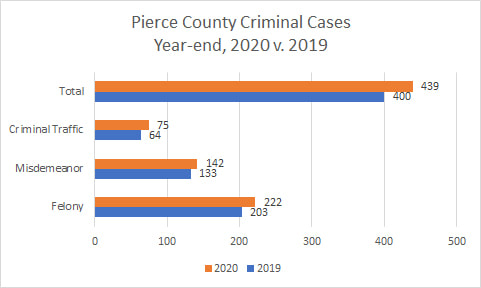
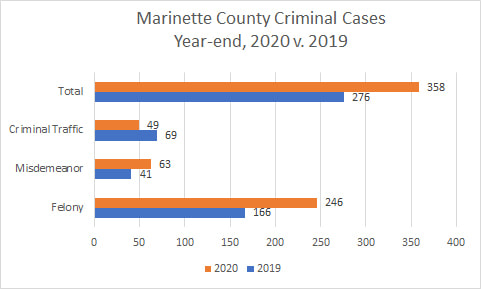
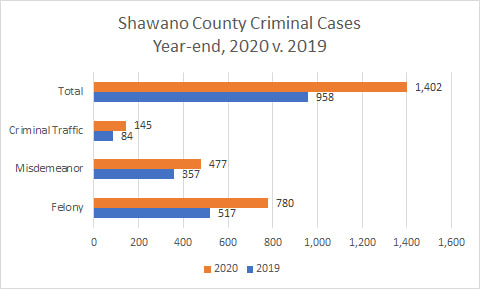
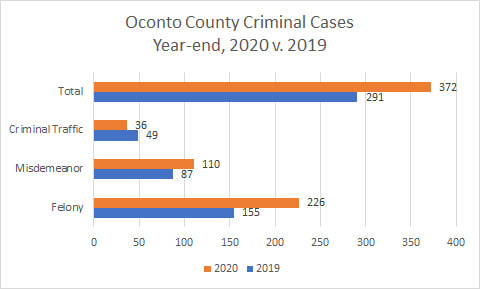
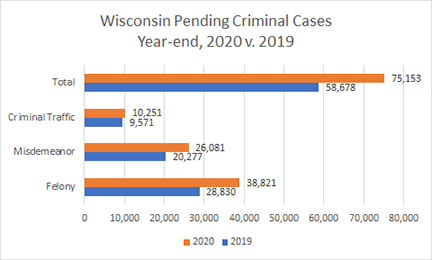
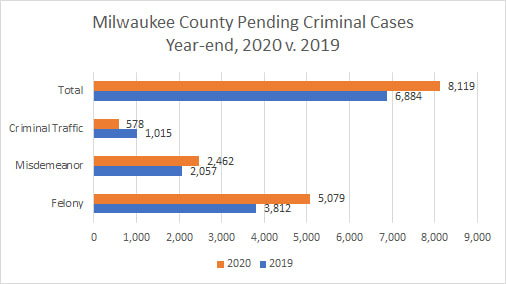

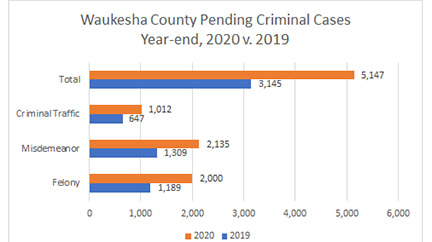
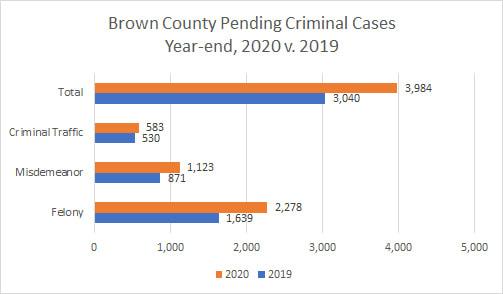

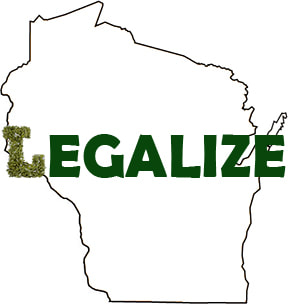







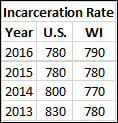
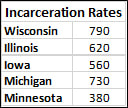

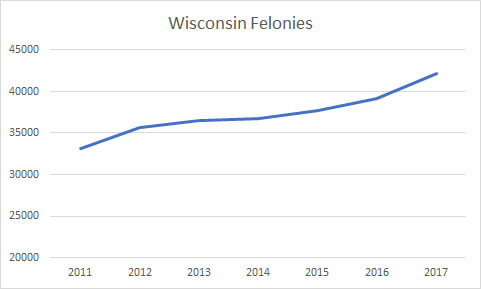



 RSS Feed
RSS Feed